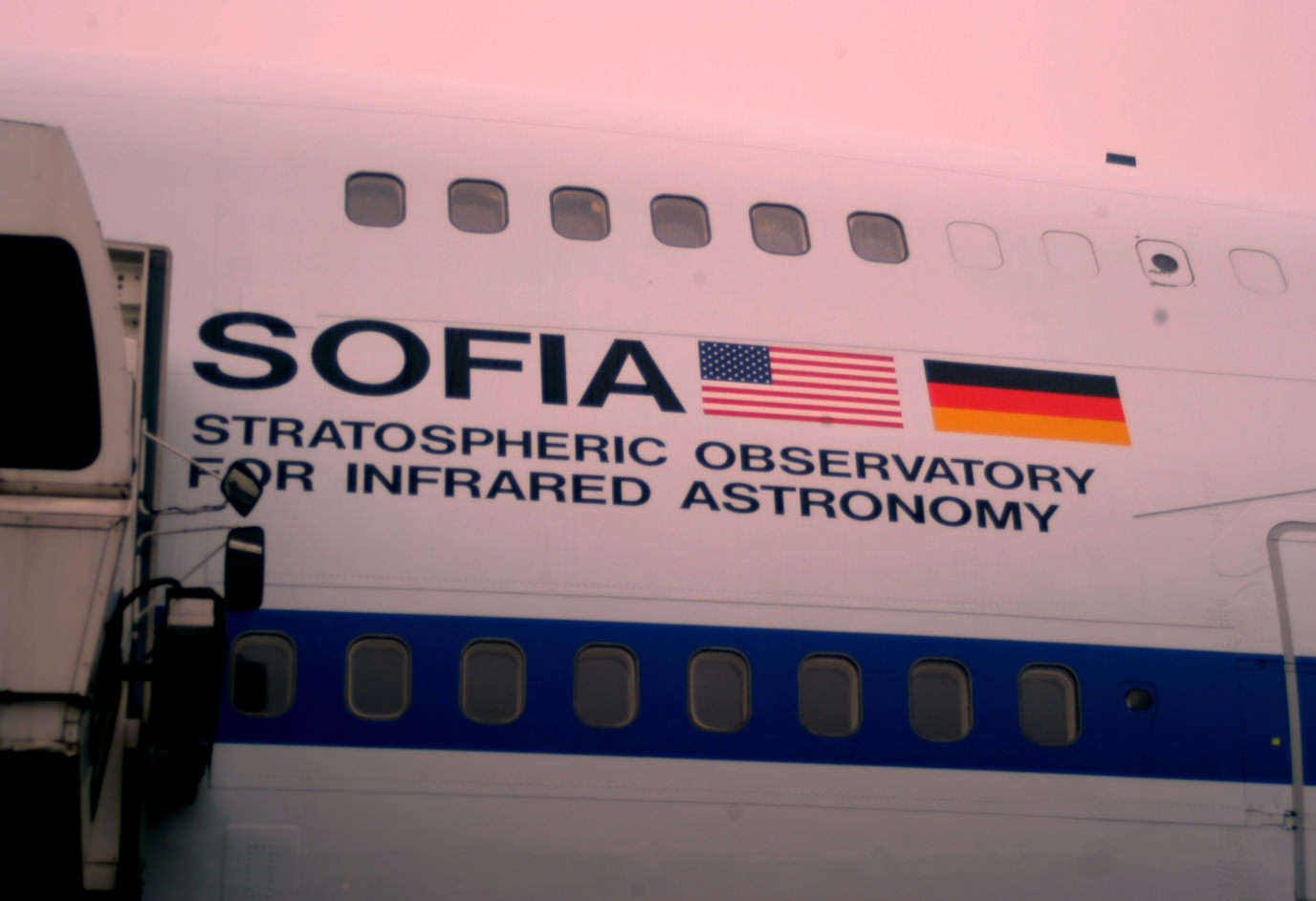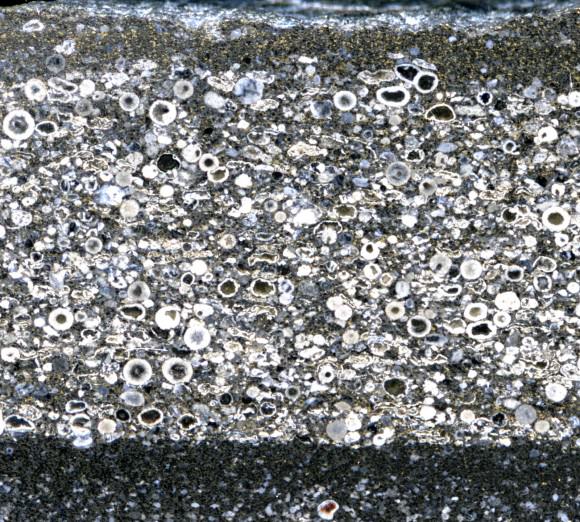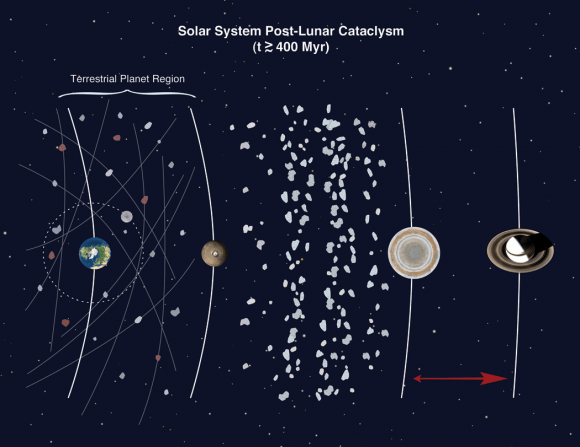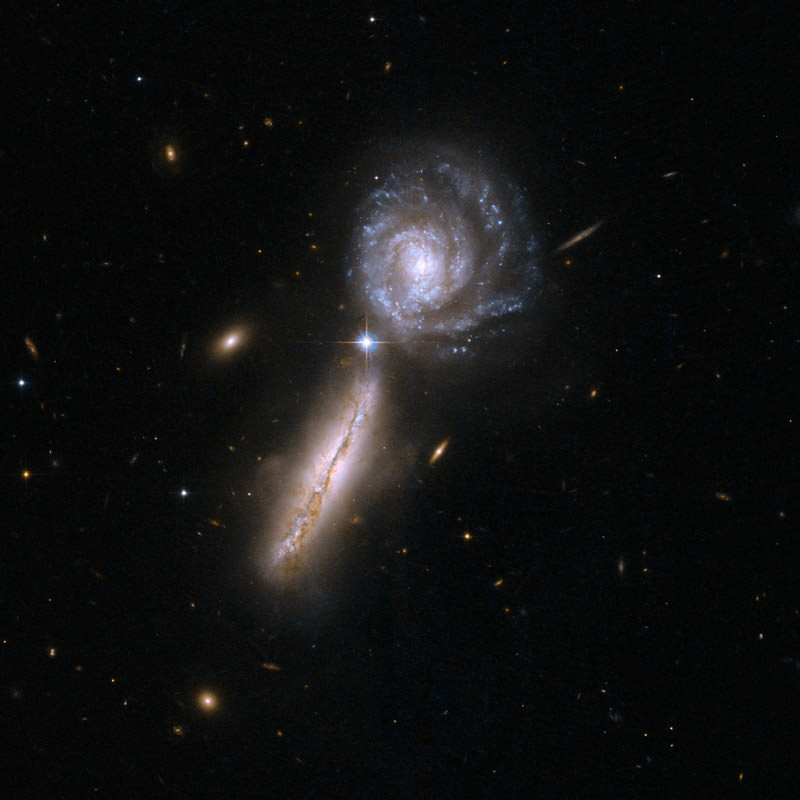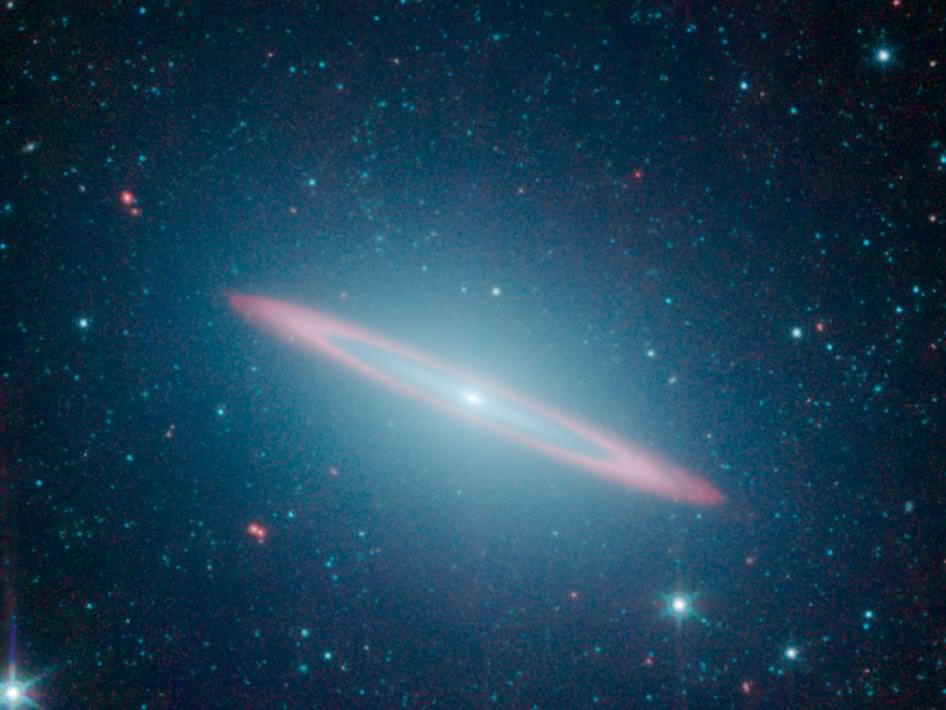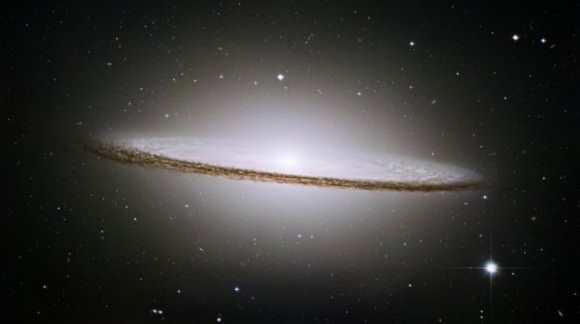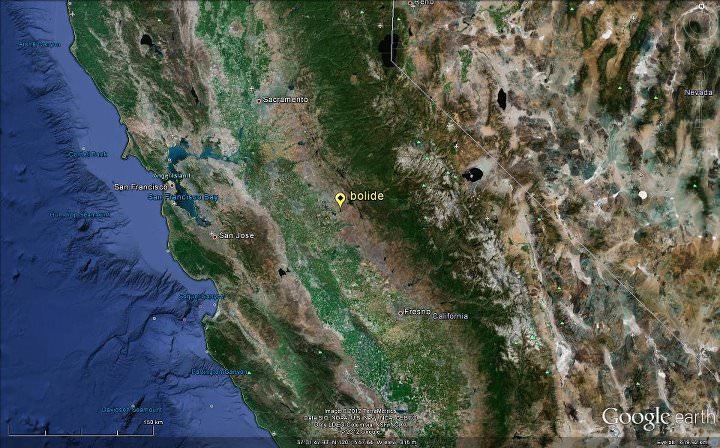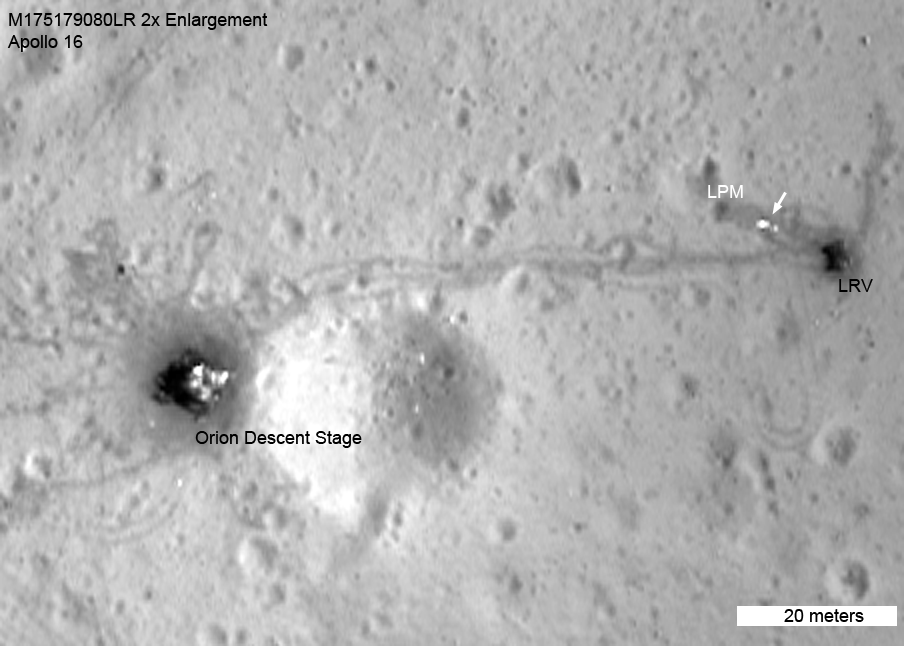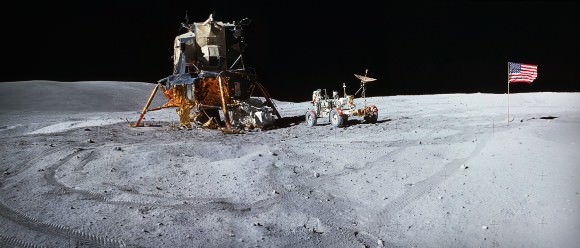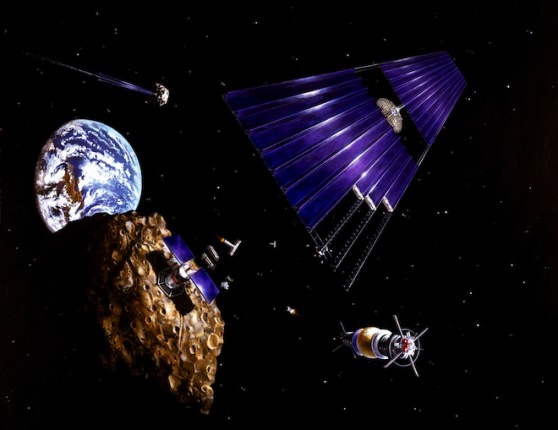[/caption]
One of the most remarkable observatories in the world does its work not on a mountaintop, not in space, but 45,000 feet high on a Boeing 747. Nick Howes took a look around this unique airliner as it made its first landing in Europe.
SOFIA (Stratospheric Observatory for Infrared Astronomy) came from an idea first mooted in the mid-1980s. Imagine, said scientists, using a Boeing 747 to carry a large telescope into the stratosphere where absorption of infrared light by atmospheric water molecules is dramatically reduced, even in comparison with the highest ground-based observatories. By 1996 that idea had taken a step closer to reality when the SOFIA project was formally agreed between NASA (who fund 80 percent of the cost of the 330 million dollar mission, an amount comparable to a single modest space mission) and the German Aerospace Centre (DLR, who fund the other 20 percent). Research and development began in earnest using a highly modified Boeing 747SP named the ‘Clipper Lindburgh’ after the famous American pilot, and where the ‘SP’ stands for ‘Special Performance’.
Maiden test flights were flown in 2007, with SOFIA operating out of NASA’s Dryden Flight Research Center at Edwards Airforce Base in the Rogers Dry Lake in California – a nice, dry location that helps with the instrumentation and aircraft operationally.
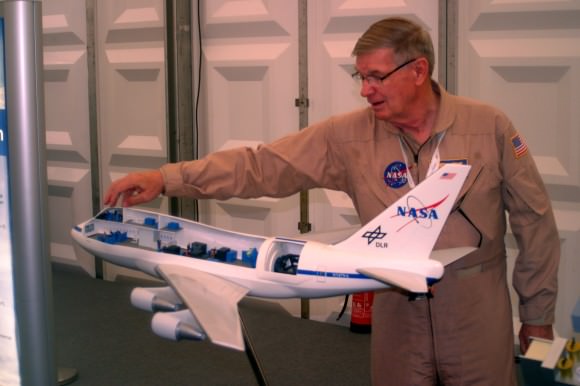
As the plane paid a visit to the European Space Agency’s astronaut training centre in Cologne, Germany, I was given a rare opportunity to look around this magnificent aircraft as part of a European Space ‘Tweetup’ (a Twitter meeting). What was immediately noticeable was the plane’s shorter length to the ones you usually fly on, which enables the aircraft to stay in the air for longer, a crucial aspect for its most important passenger, the 2.7-metre SOFIA telescope. Its Hubble Space Telescope-sized primary mirror is aluminium coated and bounces light to a 0.4-metre secondary, all in an open cage framework that literally pokes out of the side of the aircraft.
As we have seen, the rationale for placing a multi-tonne telescope on an aircraft is that by doing so it is possible to escape most of the absorption effects of our atmosphere. Observations in infrared are largely impossible for ground-based instruments at or near sea-level and only partially possibly even on high mountaintops. Water vapour in our troposphere (the lower layer of the atmosphere) absorbs so much of the infrared light that traditionally the only way to beat this was to send up a spacecraft. SOFIA can fill a niche by doing nearly the same job but at far less risk and with a far longer life-span. The aircraft has sophisticated infrared monitoring cameras to check its own output,and water vapour monitoring to measure what little absorption is occurring.
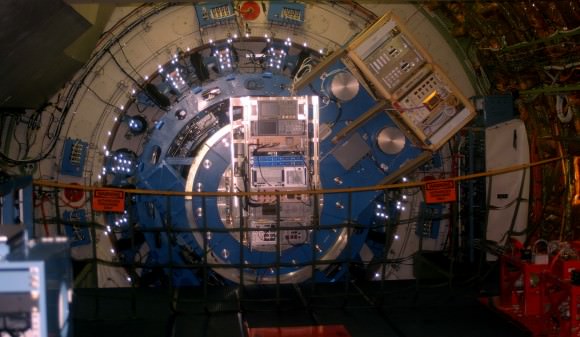
The 2.7-metre mirror (although actually only 2.5-metres is really used in practice,) uses a glass ceramic composite that is highly thermally tolerant, which is vital given the harsh conditions that the aircraft puts the isolated telescope through. If one imagines the difficulty amateur astronomers have some nights with telescope stability in blustery conditions, spare a thought for SOFIA, whose huge f/19.9 Cassegrain reflecting telescope has to deal with an open door to the
800 kilometres per hour (500 miles per hour) winds .Nominally some operations will occur at 39,000 feet (approximately 11,880 metres) rather than the possible ceiling of 45,000 feet (13,700 metres), because while the higher altitude provides slightly better conditions in terms of lack of absorption (still above 99 percent of the water vapour that causes most of the problems), the extra fuel needed means that observation times are reduced significantly, making the 39,000
feet altitude operationally better in some instances to collect more data. The aircraft uses a cleverly designed air intake system to funnel and channel the airflow and turbulence away from the open telescope window, and speaking to the pilots and scientists, they all agreed that there was no effect caused by any output from the aircraft engines as well.
Staying cool
The cameras and electronics on all infrared observatories have to be maintained at very low temperatures to avoid thermal noise from them spilling into the image, but SOFIA has an ace up its sleeve. Unlike a space mission (with the exception of the servicing missions to the Hubble Space Telescope that each cost $1.5 billion including the price of launching a space shuttle), SOFIA has the advantage of being able to replace or repair instruments or replenish its coolant, allowing an estimated life-span of at least 20 years, far longer than any space-based infrared mission that runs out of coolant after a few years.
Meanwhile the telescope and its cradle are a feat of engineering. The telescope is pretty much fixed in azimuth, with only a three-degree play to compensate for the aircraft, but it doesn’t need to move in that direction as the aircraft, piloted by some of NASA’s finest, performs that duty for it. It can work between a 20–60 degree altitude range during science operations. It’s all been engineered to tolerances that make the jaw drop. The bearing sphere, for example, is polished to an accuracy of less than ten microns, and the laser gyros provide angular increments of 0.0008 arcseconds. Isolated from the main aircraft by a series of pressurised rubber bumpers, which are altitude compensated, the telescope is almost completely free from the main bulk of the 747, which houses the computers and racks that not only operate the telescope but provide the base station for any observational scientists flying with the plane.
PI in the Sky
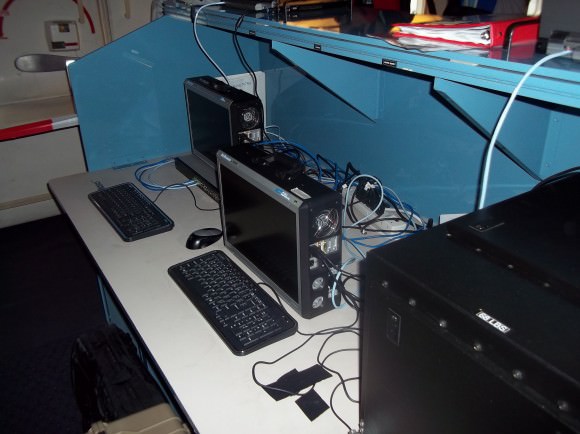
The Principle Investigator station is located around the mid-point of the aircraft, several metres from the telescope but enclosed within the plane (exposed to the air at 45,000 feet, the crew and scientists would otherwise be instantly killed). Here, for ten or more hours at a time, scientists can gather data once the door opens and the telescope is pointing at the target of choice, with the pilots following a precise flight path to maintain both the instrument pointing accuracy and also to best avoid the possibility of turbulence. Whilst ground-based telescopes can respond quickly to events such as a new supernova, SOFIA is more regimented in its science operations and, with proposal cycles over six months to a year, one has to plan quite accurately how best to observe an object.
Forecasting the future
Science operations started in 2010 with FORCAST (Faint Object Infrared Camera for Sofia Telescope) and continued into 2011 with the GREAT (German Receiver for Astronomy at Teraherz Frequencies) instrument. FORCAST is a mid/far infrared instrument working with two cameras between at five and forty microns (in tandem they can work between 10–25 microns) with a 3.2 arcminute field-of-view. It saw first light on Jupiter and the galaxy Messier 82, but will be working on imaging the galactic centre, star formation in spiral and active galaxies and also looking at molecular clouds, one of its primary science goals enabling scientists to accurately determine dust temperatures and more detail on the morphology of star forming regions down to less than three-arcsecond resolution (depending on the wavelength the instrument works at). Alongside this, FORCAST is also able to perform grism (i.e. a grating prism) spectroscopy, to get more detailed information on the composition of objects under view. There is no adaptive optics system, but it doesn’t need one for the types of operations it’s doing.
FORCAST and GREAT are just two of the ‘basic’ science operation instruments, which also include Echelle spectrographs, far infrared spectrometers and high resolution wideband cameras, but already the science team are working on new instruments for the next phase of operations. Instrumentation switch over, whilst complex, is relatively quick (comparable to the time it takes to switch instruments on larger ground observatories), and can be achieved in readiness for observations, which the plane aims to do up to 160 times per year. And whilst there were no firm plans to build a sister ship for SOFIA, there have been discussions among scientists to put a larger telescope on an Airbus A380.
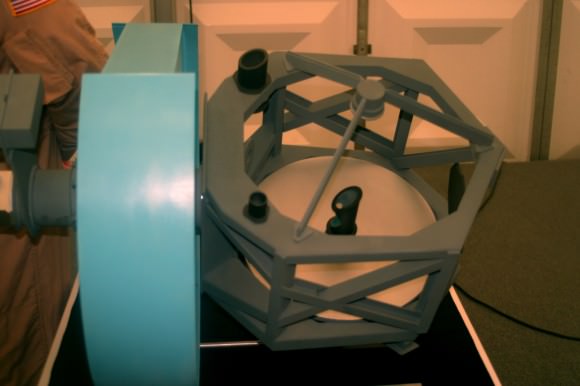
Sky Outreach
With a planned science ambassador programme involving teachers flying on the aircraft to do research, SOFIA’s public profile is going to grow. The science output and possibilities from instruments that are constantly evolving, serviceable and improvable every time it lands is immeasurable in comparison to space missions. Journalists had only recently been afforded the opportunity to visit this remarkable aircraft, and it was a privilege and honour to be one of the first people to see it up close. To that end I wish to thank ESA and NASA for the invitation and chance to see something so unique.

